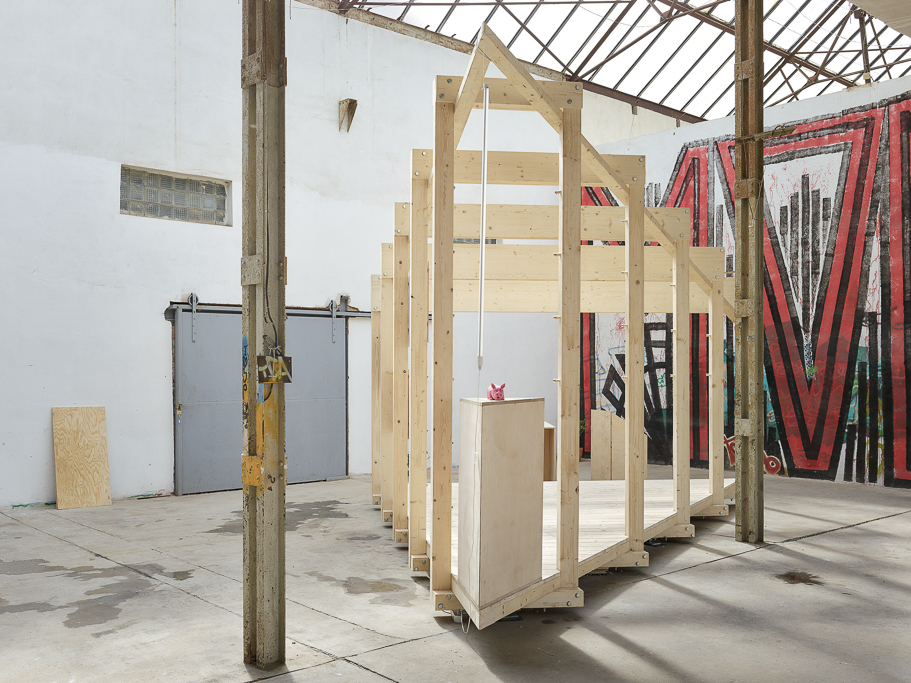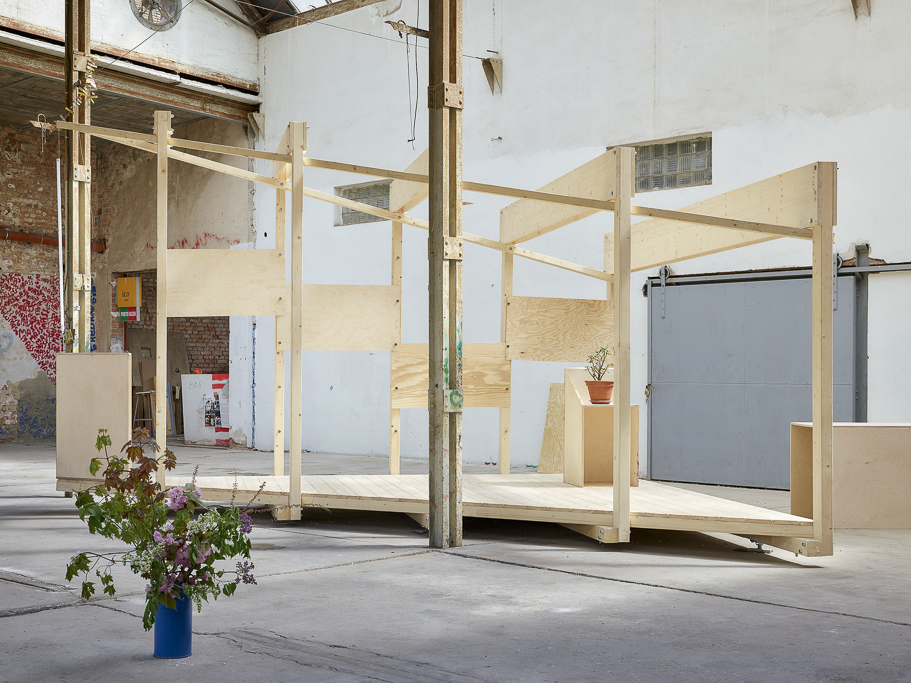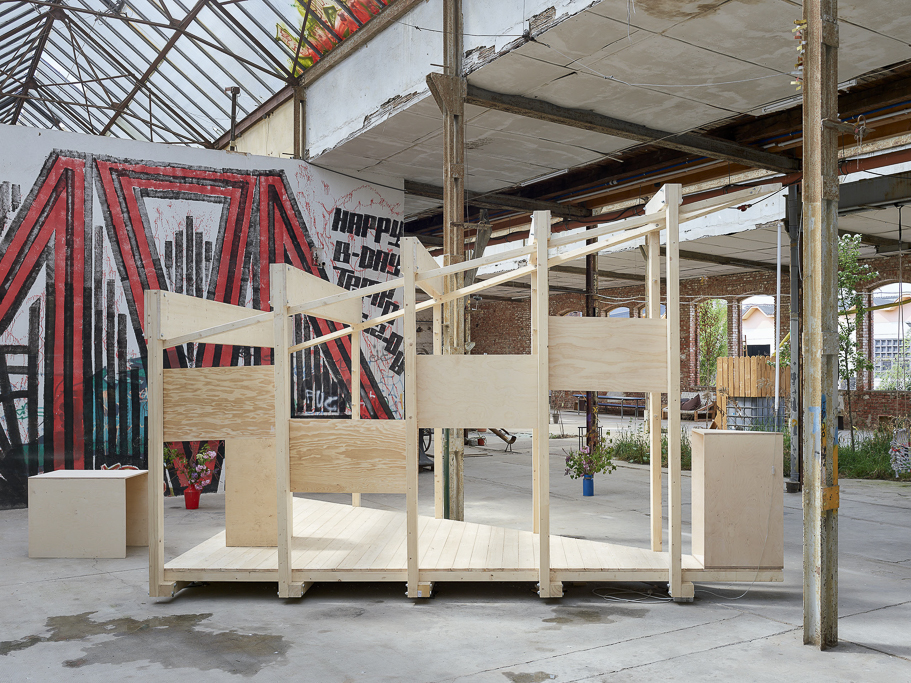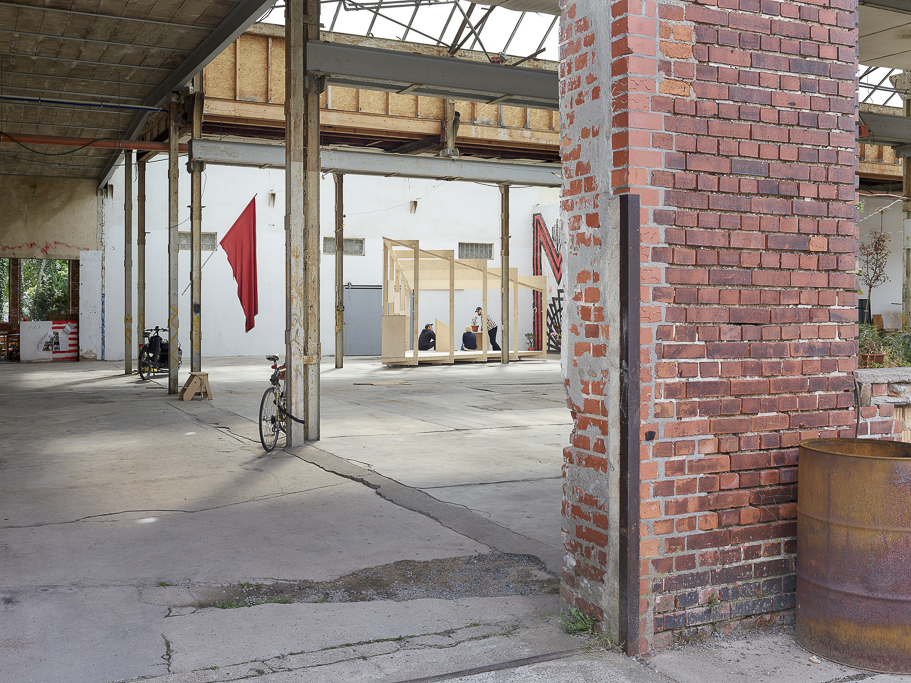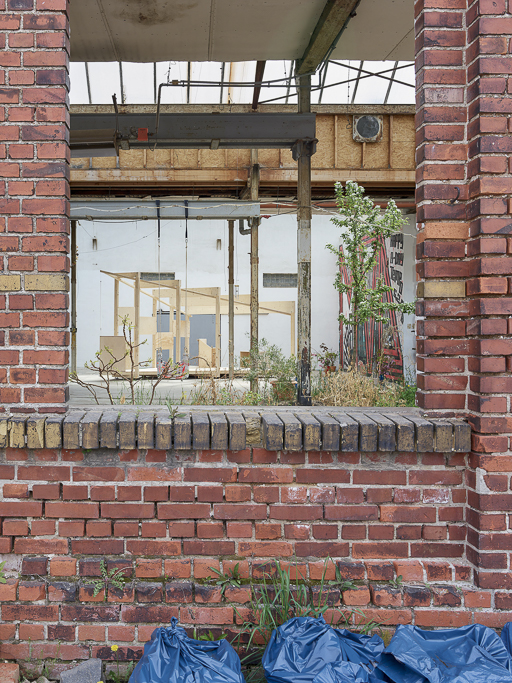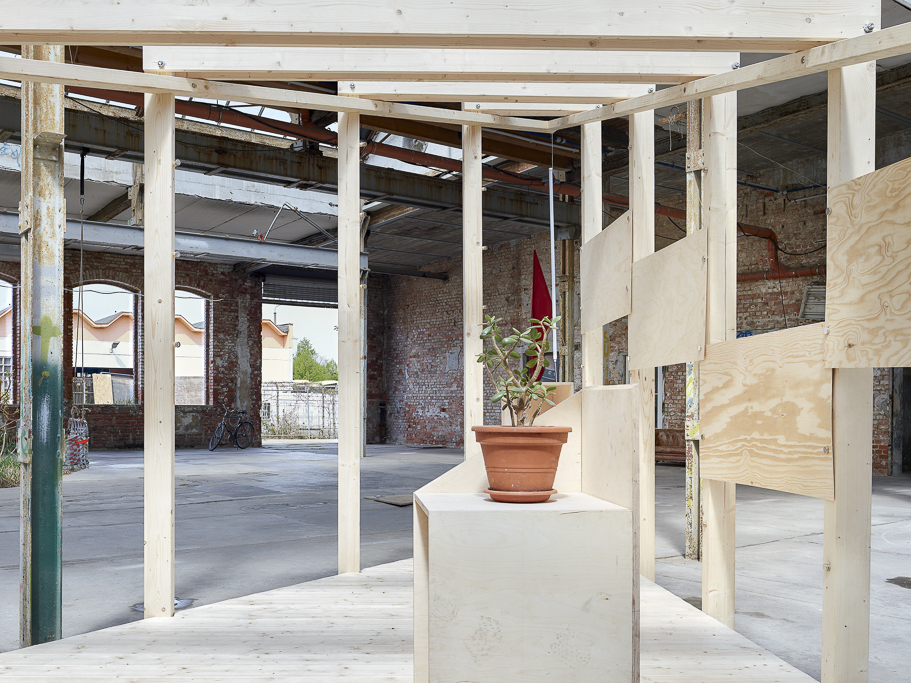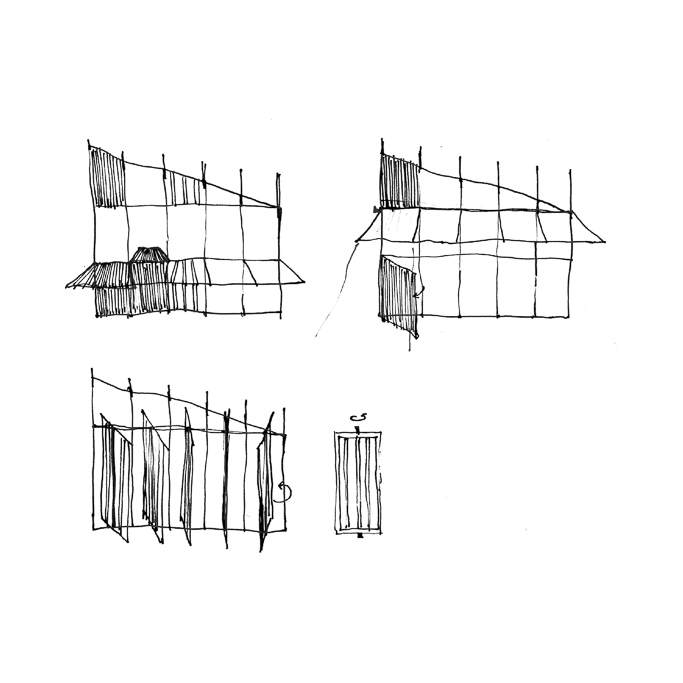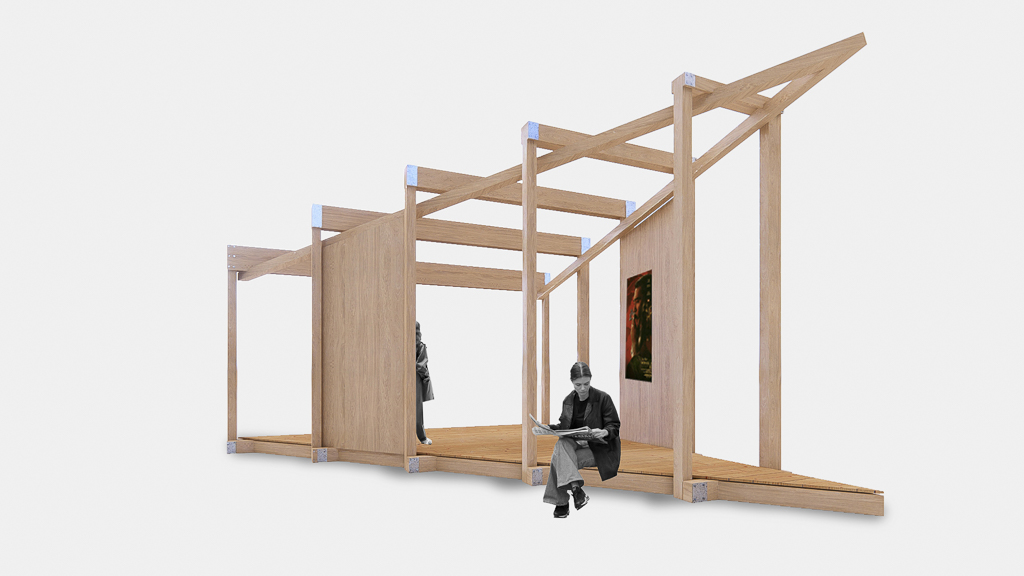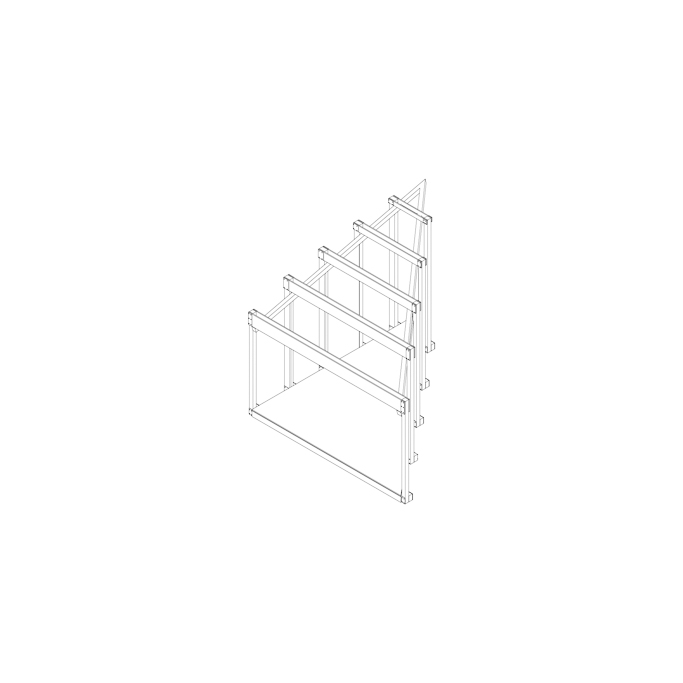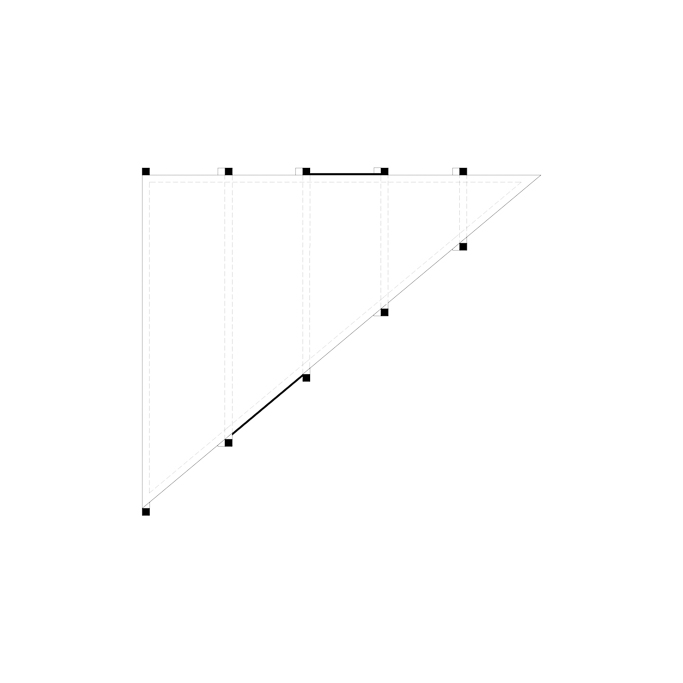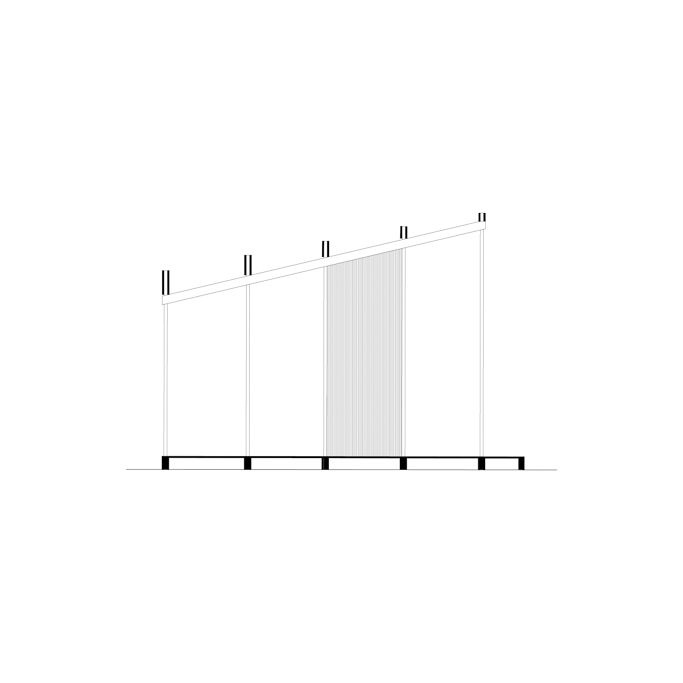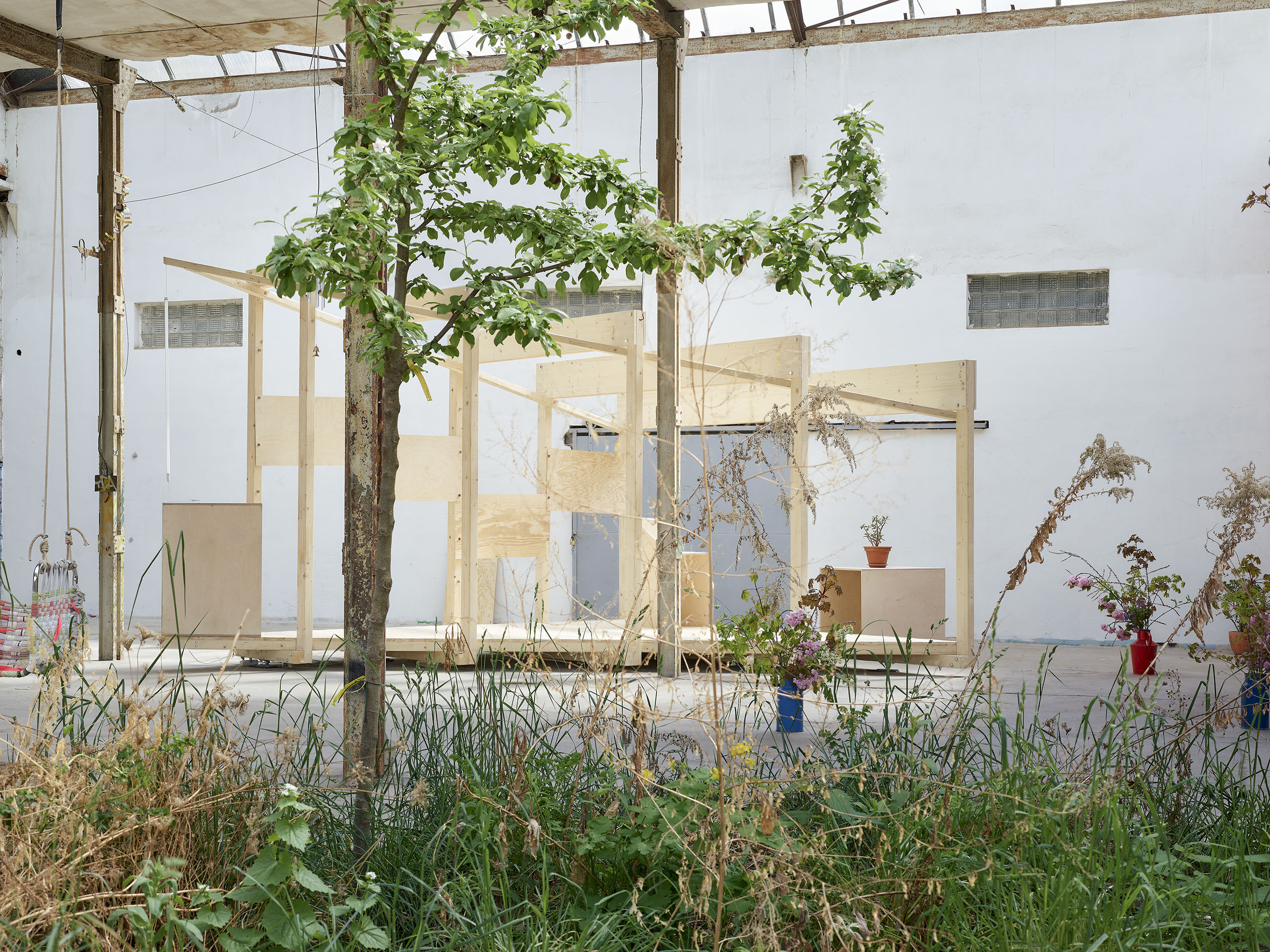
Typology |
Shared Architectures |
Program |
Pavillon |
Location |
DE |
Year |
2025 |
Status |
Built |
Size in sqm |
30 |
Selection Process |
Direct Commission |
Client |
Glassfabrik |
Partner Office |
Berlin International Universities of Applied Sciences |
Team |
Pierre Escobar, Katharina Lemke, Mari-Paz Agundez, Karl Columbus, Leonora Dell'Aera, Nicola Hengstmann, Clara Wessolowski, Diana Zharassova, Elizaveta Eshchenko, Ester Qytyku, Xiran Wang, Yasmine Riahi, Jakub Pawlowski, Marco Mehringer, Nick Levin Buljubasic, Milan Harms, Jasper Goldman, Ludwig Gessner |
Photo Credits |
Michael Moser |
Prisma 39
: A Non Building for a Post Functionalist AgeThe framework of Prisma39 oscillates between pavilion, ruin, and stage. It is not architecture as object, but architecture as placeholder, a spatial suggestion in the age of contingency. Here, architecture is no longer heroic. It is adaptable, light, maybe even bored.
Read more
There are no walls, no doors, no windows. Only thresholds. This is not about form, but about negotiation. It is a remnant of something that never was, a reminder that in the ruins of industrial modernity we no longer build monuments, we build platforms.
This ambiguous spirit is mirrored in the Glasfabrik itself, a former glass factory in Leipzig now repurposed as a space for cultural, urban, and creative production. The building’s one thousand square meter hall, covered by an industrial glass roof yet missing windows, offers an unstable atmosphere, at once inside and outside, private and public, raw and charged with latent potential. Over the years, this setting has been subtly claimed by architectural gestures such as an indoor landscape, a sauna, and informal furnishings that challenge what architecture can be within such a post industrial void.
Within this evolving context, Berlin International University of Applied Sciences initiated a design studio that invited students to imagine new futures for the Glasfabrik. Each project included a mock up, and one was selected by the Glasfabrik team to be built full scale. In April 2025, students and faculty returned to Leipzig for a one week workshop to construct the final structure: Prisma 39.
The name refers to the thirty nine degree apex of the pavilion’s triangular geometry, derived from the roof structure that captivated students during early site visits. This angled profile not only echoes the industrial architecture but also introduces spatial rhythm, hierarchy, and scalar play. Beams vary in length and thickness, creating a subtle choreography of lightness and density. From different perspectives, the structure appears alternately transparent and monolithic.
The pavilion is not fixed in use. Horizontal slats support hanging elements such as screens, panels or fabrics, attached magnetically to transform the space into an exhibition or performance platform. In its first iteration, it hosts Glasfabrik: Past and Future, an exhibition curated by students reflecting on the site’s layered identity.
Read less
